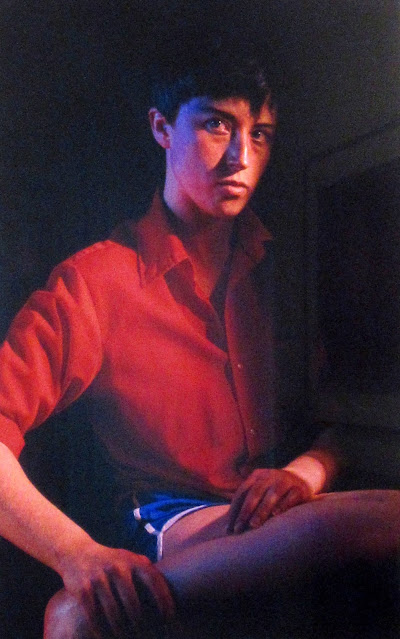'I am trying to erase myself'.
'I am trying to make other people
recognise something of themselves rather than me'.
Cindy Sherman - the early years
at the Cycladic Museum, Athens.
It was such a pleasure seeing some of Sherman's work as I had not seen any for quite a long time, over 10 years in fact.
The Colour series:
Centrefolds:
Sherman's ground-breaking and influencial art explores how women are imagined in popular culture and in our society in general. Her photography and performances in the late 1970s established her as an artistic pioneer. Working alone in her studio, she took on the roles of makeup artist, hairdresser, stylist and director, and transformed herself into the various characters depicted in her photography. Appropriating female images and stereotypes in television, film and advertising - such as the femme-fatale, career girl and housewife - Sherman's work offers a critique of traditional gender roles and identity.
At the same time, Sherman reveals and attempts to deconstruct women's roles and stereotypes bringing up questions about how the representation of women has evolved over time, how societal expectations have changed, and about the role of art in shaping or challenging cultural perceptions.
For a more thorough analysis of her work you can go here , here and here . These three posts are from a retrospective of her art I saw in New York which really demonstrated the vast scope of her work, and her genius - groundbreaking work indeed.
Constructed images of women that make us think about gender roles and representation: these women are looking directly at the camera and by extension, the viewer. The characters in these images may seem to reveal the real Sherman, but they are invented images that bring to the foreground the fragile boundaries between what is real and what is artificial, covering and revealing the subjects of her shots through shadow and light.
'Transformation', 2009, From the Art 21 TV series:
We watched parts of this where she talked about her work
Centrefolds:
In 1981 Artforum commissioned Cindy Sherman to create a series of images for the magazine. The series comprises twelve large-scale, horizontal colour photographs, known as Centrefolds, a term referring to the pictures found in the centre spread of a magazine, but also to CinemaScope, a widescreen lens and projection system used in the cinema industry mainly during the 1950s.
In these photographs there are clear references to erotic images commonly found in the centrefold of men's magazines of the time. Sherman transforms herself into different female characters and challenges the expectations surrounding this type of photography, drawing our attention to the popular way of consuming images, especially of women. None of the young women look directly into the camera and their expressions suggest feelings of melancholy, vulnerability and fear among others.
Even though Artforum never published those photographs for fear of public backlash, these later became one of her most famous series.
Rear Screen Projections:
In 1980 Sherman created a series known as Rear Screen Projections, transforming herself with different costumes, make-up and wigs, leaving the narrative of her scenes deliberately vague.
In these works she incorporated two cinematic techniques: close-ups and the placement of her characters in front of a set. Rather than using natural light and actual locations, she returned to the controlled environment of the studio, posing in front of locations projected onto a large screen - a technique often used by Alfred Hitchcock in several of his films. Here, realistic imagery is juxtaposed with the artificial environment where Sherman's characters are placed.





























No comments:
Post a Comment